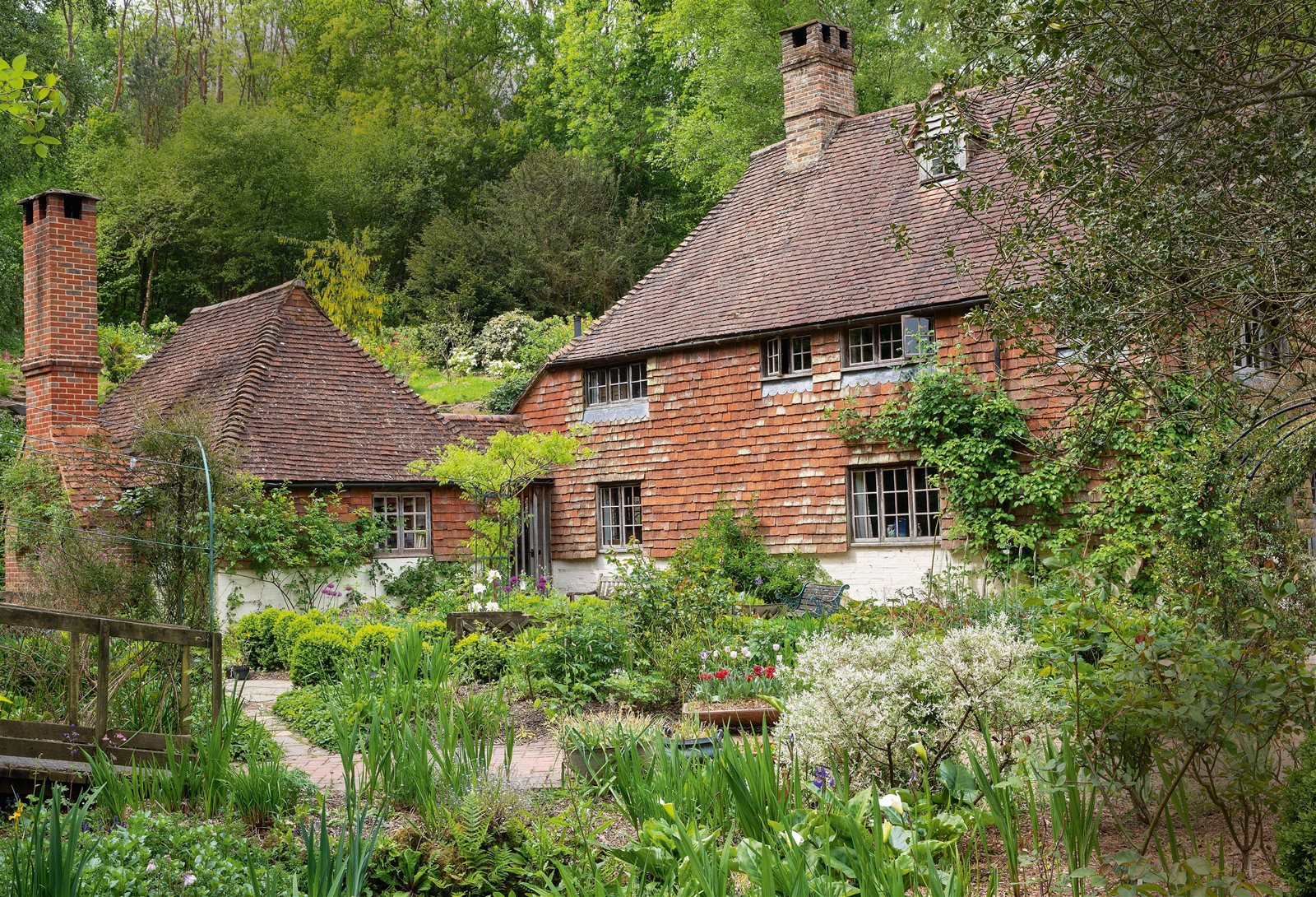
Nestled within a north-facing hollow, the 16th-century cottage – its facade clad with Swallows’ handmade clay tiles, a typical style of the region – looks out onto a cottage style front garden
Frances Druce has lifelong experience of overseeing property transformations, so when she saw Copyhold Hollow put up for sale by the Borde Hill Estate in 1993, she had every intention of renovating and selling on the Grade II-listed 16th-century cottage. However, as soon as she viewed the house, she knew she could not leave. ‘It sits in a hollow just off a country lane, with woodland on three sides and opens northwards to a meadow opposite,’ she explains. ‘Before I got out of the car, a fox ran across the grossly overgrown lawn; that sealed my desire to purchase Copyhold Hollow. In fact, I decided I wanted to live there before I had even switched off the engine. You feel nestled by the hollow. It invites you in and makes you feel at home,’ she adds.
It took three and a half years to make the house habitable; meanwhile, the garden slowly revealed itself. Separating the garden from the road is a 1,000-year-old box hedge, believed to be the oldest in Sussex, while towering above the steep slopes are a coastal redwood, Sequoia sempervirens, and a stunning mature beech tree.
‘It took months before I even found the whole length of the boundary as little of the garden had been cleared since the 1987 storm, and the entire site was horribly overgrown,’ Frances explains.
‘It was never my ambition to create a garden, but I knew the house needed to be enhanced by its surroundings, just as a person’s hair enhances their face. So, I battled daily with brambles and sycamore; holly and ash saplings.’
The garden first required the installation of land drains due to the high water table. Frances channelled the natural springs into water features, including a pond by the house, over which a rustic wooden bridge has since been constructed.
With the contours of the land revealed, Frances began to plan and install a winding route. ‘Paths went in where I tended to walk, which involved carrying 10 tonnes of sandstone gravel up the slope each winter for three years,’ she explains. She also laid York Stone paving near the house.